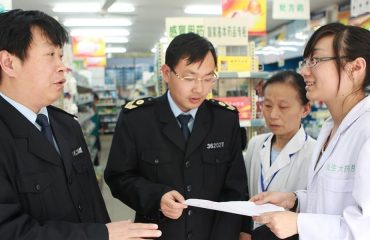Cosmetics Safety and Technical Standards have been revised by the China National Institutes for Drug Control and are currently open for public comments until April 30, 2022. On March 31, 2022, the National Institutes for Food and Drug Control (NIFDC) announced the work arrangement for amending the Cosmetics Safety and Technical Standard. A feedback form (Appendix 4) is available for email submission to hzpbwh@nifdc.org.cn before the said deadline. Even if feedback cannot be submitted in time, cosmetics companies in China should be aware of the scope of the proposed changes.
Cosmetics Safety and Technical Standards – Highlights
The primary updates and changes to China’s Cosmetics Safety and Technical Standards are set out below.
- Revise and improve the terms and definitions of prohibited raw materials, sunscreens, hair dyes, rinse-off cosmetics, eye cosmetics, and safety-risk substances;
- Hair dyes: Substances added to cosmetics to change the color of the hair, and the original color of the hair cannot be restored by immediate washing after use;
- Eye Cosmetics: Cosmetics advertised for use on the skin around the eyes, eyelashes, and eyebrows.
- Increase the general requirements for pH value (2.0-11.5, excluding 2.0 and 11.5) when using cosmetics to solve the problem of inapplicability of the standard.
- Based on the current situation of the industry and in accordance with the relevant international environmental protection and chemical management regulations, gradually improve the product quality level. For the mercury limit in the General Provisions, delete the remark “except eye cosmetics containing organic mercury preservatives”.
- Permitted preservatives: delete “salts of phenylmercuric, including phenylmercuric borate”, “thimerosal”.
- “Prohibited Directory”:
- Adjusted according to the announcement of the NMPA on Updating the List of Prohibited Raw Materials in Cosmetics (No. 74 of 2021);
- The names of some raw materials are standardized again, such as: hemp pome fruit, hemp seed oil, hemp leaf extract, marigold flower extract, marigold flower oil, etc.
- “List of Restricted Raw Materials”:
- According to the announcement of the NMPA on Updating the List of Prohibited Raw Materials for Cosmetics (No. 74 of 2021), some raw materials have been deleted and added to the list of prohibited raw materials;
- According to the “Cosmetics Supervision and Administration Regulations” and “Cosmetics Classification Rules and Classification Catalog”, standardize the use of raw materials;
- Toluene is a priority control chemical in my country, but some products are irreplaceable. Therefore, referring to EU regulations, strengthen the management requirements for the use of raw materials, and add toluene to the restricted list.
- Refine the annotation of α-hydroxy acids.
- According to the announcement (No. 12 of 2019) on the incorporation of 9 inspection methods including the detection method of free formaldehyde in cosmetics into the Cosmetics Safety Technical Specifications (2015 Edition), the new “mandelic acid, α-hydroxyoctanoic acid, α-hydroxydecanoic acid, gluconic acid, lactobionic acid” were added, these α-hydroxy acids are all α-hydroxy acids in the “Catalogue of Used Cosmetic Raw Materials”.
- “Permitted Catalog”
- Permitted preservatives:
- According to the announcement of the NMPA on the approval of 4 raw materials including lauroyl arginine ethyl ester HCl as cosmetic raw materials (No. 141 of 2020), newly added lauroyl arginine ethyl ester hydrochloride;
- According to the announcement of the NMPA on updating the list of prohibited raw materials for cosmetics (No. 74 of 2021), some raw materials have been deleted and added to the prohibited list. Such as: benzyl chlorophenol, formaldehyde and paraformaldehyde;
- Based on the current situation of the industry and in accordance with the relevant international environmental protection and chemical management regulations, gradually improve the product quality level, and delete some raw materials: salts of phenylmercury, including phenylmercuric borate, thimerosal, etc.;
- Cassone: clarify the effective substance, the maximum allowable concentration of cosmetics when used is 0.0015%, and add “(calculated as a 3:1 mixture of methylchloroisothiazolinone and methylisothiazolinone)”.
- Permitted sunscreens:
- According to the announcement of the NMPA on updating the list of prohibited raw materials for cosmetics (2021 No. 74), some raw materials are deleted: 3-benzylidene camphor.
- Permitted colorants:
- According to the actual use in the industry, some raw materials are deleted and adjusted to the list of permitted hair dyes: Galla rhois gallnut extract .
- Permitted hair dyes:
- According to the announcement of the NMPA on Updating the Catalogue of Cosmetics Prohibited Raw Materials (No. 74 of 2021), some raw materials are deleted: 2-chloro-p-phenylenediamine, 2-chloro-p-phenylenediamine sulfate.
- According to the actual use in the industry, standardize the requirements for the use of raw materials, and add a permitted hair dye: Galla rhois gallnut extract or gallic acid.
- Permitted preservatives:
- Testing methods: Sort out and integrate the testing methods dynamically revised in Chapter 4 of the original 2015 edition of the “Code” and the National Bureau’s circular.
By Jeff Jiang. If you would like to learn more about our regulatory services for cosmetics in China especially relating to safety and technical standards, or our registration and CRO services for cosmetics, pharmaceuticals, medical devices, IVDs or other products, please contact Cisema.

 Deutsch
Deutsch  Italiano
Italiano  Français
Français  日本語
日本語  한국어
한국어 



